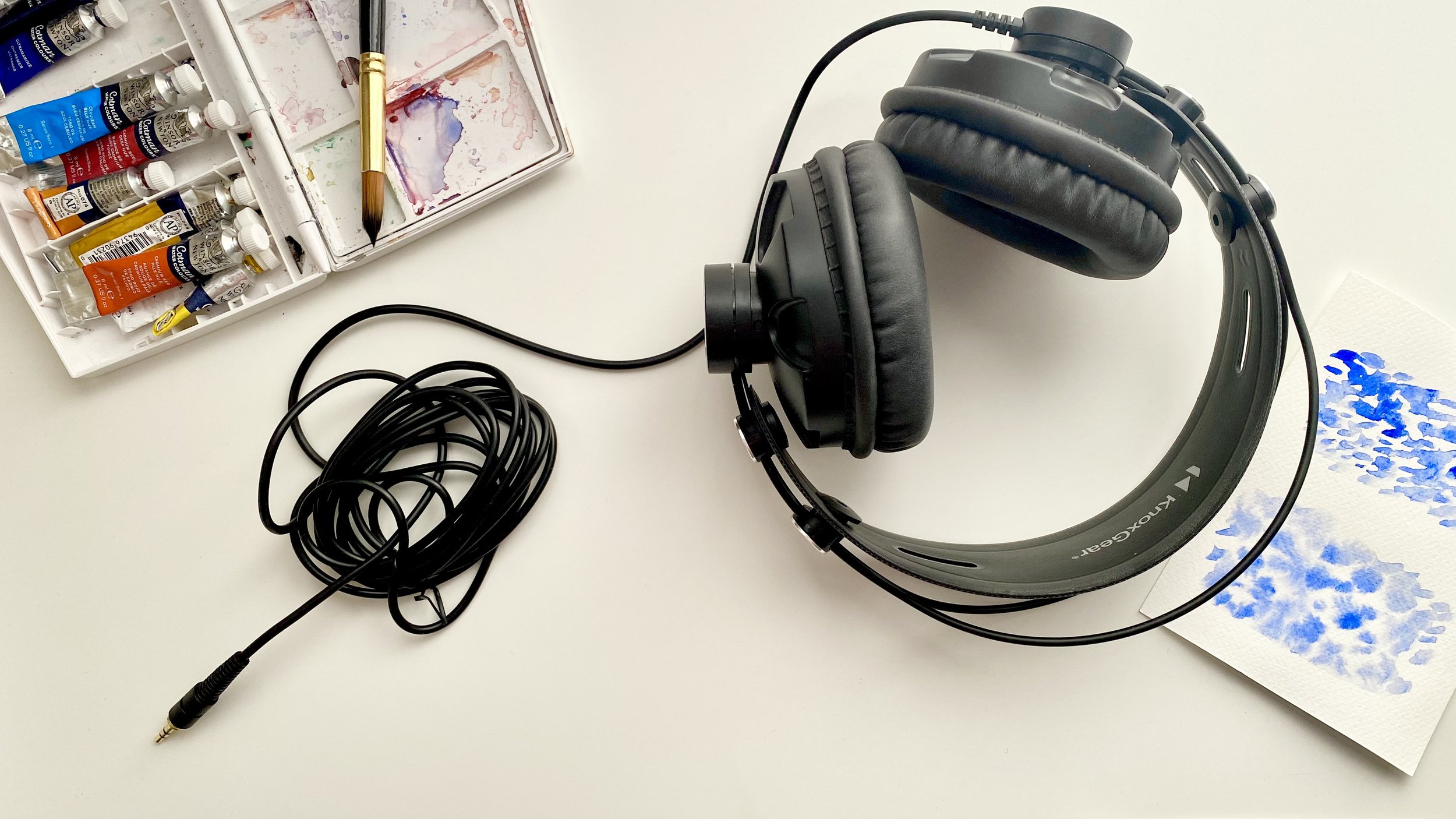Why Audio is Make or Break
I mentioned in last week’s post that audio is kind of a big deal these days. One reason is that so many content consumers are listening in with noise canceling headphones. That means they can hear every little pin drop in your videos. Also, with HD movies and TV came better audio in general. So people are kind of used to that now, and therefore expect it.
That's not to say that you have to spend thousands, or even hundreds of dollars, to get a good sound. Can you believe I started teaching in 2016 with my in-line mic/headphone that came with my iPhone 5? Talk about low budget and low tech!
When I was making my first classes, I didn't want to spend lots of money on equipment until I knew I was committed to the process.
So it wasn't until a couple of years later that I invested in a better microphone. In the meantime, I learned some really cool tips and tricks from other teachers and audio experts. Now, I'm going to share some basic audio boosting tips with you, and they are much more simple and cost-effective than you might think.
The important thing to know, is that while you are recording, you can compensate for how the sound reaches your microphone. For example, sound waves tend to bounce on hard surfaces, like floors with no carpet, walls with no draperies, and large rooms with high ceilings. That means recording in the smallest room possible with the most absorbable material present, the better. We’re talking pillows, sofas, beds, rugs, canvases on the walls, and so on.
Did you know that I once used a walk-in closet with a rug on the floor to record all my audio???
A walk-in closet for Pete’s sake! I did that because I didn’t have a great microphone, and the closet was the most effective sound absorbing room in my home.
Later I used my fabric photo light box which I lined with thick foam. I would place my mic and laptop inside, then stick my head in while recording. Yes, I did some crazy maneuvers in order to improve my audio. Little did I know that I could have had a much better result with better audio editing software. Who knew?
You learn as you go and you grow as you learn.
But that's how it goes in the online teaching journey. I truly would not have missed any of the crazy, random lessons I learned! They've all helped me to get where I am today.
This week’s tip? Remember to have lots of soft materials in the room you’re recording, especially near your microphone to absorb those unwanted echos and sounds.
Next week we’ll talk about more audio tips, audio editing software and how it can help you even more! See you then. : )



